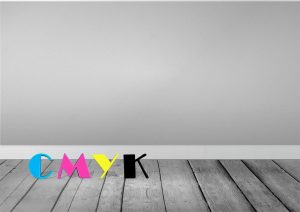
Even with today’s focus on digital printing, traditional printing can still make a large difference.
How often do you rely on printed materials? Even with today’s focus on digital printing, traditional printing can still make a large difference. Efficiency is the name of the game, and that’s what we strive to do for you. After all, time is of the essence. Avoiding last-minute edits or manipulations speeds the process up considerably.
Verify the Resolution is Correct
Resolution is important, especially when it comes to image fidelity. For this to happen, the resolution needs to be as high as you can go. The bare minimum is 300 dpi, but you will want to go higher than that depending on the recommendations you receive from your printing partner. Use the actual resolution you want to print in during the preparation process so each iteration of your image and text don’t lose quality before it’s time to go to press.
Ensure Color Consistency
Colors are eye-catching ways to emphasize the contents of your printed materials. You don’t want to ruin the images, which can happen by accident during the design phase. Computers normally display in RGB formats, but you’ll need to use the CMYK format to ensure printing accuracy. To make black stand out better, be sure to use 100% black; don’t use the CMY encoding. While this sounds confusing, just remember that the K in CMYK represents black.
Look Out for Trim and Bleed
You might be wondering what trim and bleed mean. These printing terms simply refer to the margins of your image – where it isn’t safe to place text or pictures or other important information because it runs the risk of being cut off. Leave ¼ inch of space between the edge of the content and the edge of the image or page itself. You’ll see later on that it’s meant to be a buffer zone.
Don’t Overcompress
Do what you can to avoid compression errors. Save your file in the TIFF format to help preserve colors and pixels. While JPG and GIF may reduce the file size, you could be dissatisfied with the results. That’s because parts of the image and some of the color information are lost.
Choose a Standard Format
You also need to choose a standard format for your product. What exactly does this mean? Be sure to save your printing materials as a PDF before you pass it along to your printer partner.
Let Time Printers Help With Your Design
Whether you know already how your marketing materials should look or you want further advice, Time Printers is here to help. We service all of Baltimore, Hunt Valley, and Towson. Our team of professionals can tackle all of your questions. Give us a call at 410-566-3005 and be sure to follow us on Facebook, Twitter, Pinterest, and LinkedIn for tips and to see what we have been working on and what we can do for you.
